The Birthstone for March 29: An In-Depth Exploration
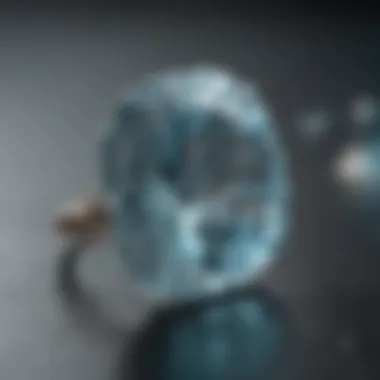
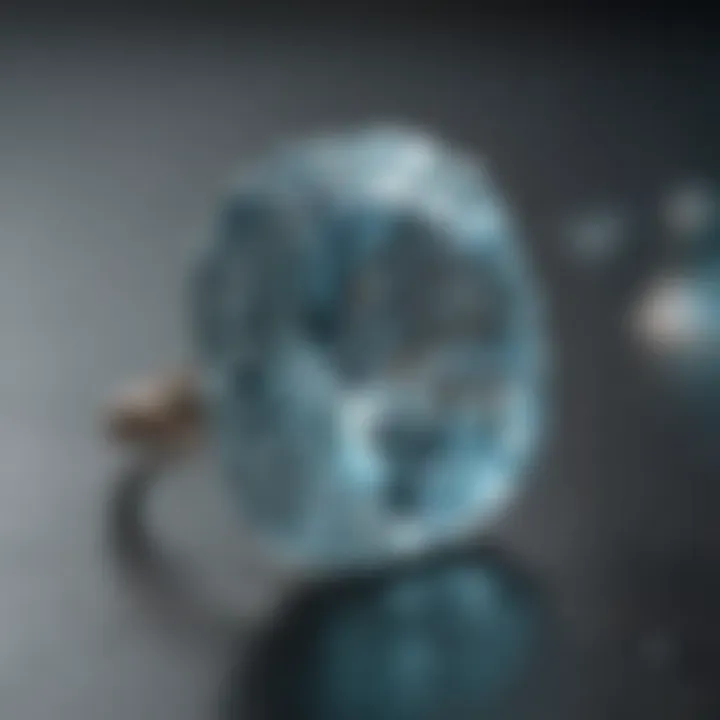
Intro
March 29 is celebrated by those born on that date with the beautiful gemstone known as Aquamarine. This gem is not only a visual wonder but also carries a wealth of historical importance and cultural significance. Understanding Aquamarine involves examining its characteristics, origins, and uses over centuries. The gem is often associated with tranquility and clarity, qualities that resonate deeply with those who hold it dear.
In this exploration, we will uncover the various facets of Aquamarine, from its physical properties to its metaphysical associations. We will also delve into the ethical considerations surrounding its sourcing, ensuring a comprehensive view of this enchanting gemstone.
Gemstone Overview
Definition and Characteristics
Aquamarine is a blue to cyan variety of beryl. The name itself is derived from the Latin words "aqua," which means water, and "marina," meaning of the sea. This is fitting, as the gem's colors often evoke the hues of the ocean. Aquamarine is known for its remarkable clarity and brilliance, often surpassing even that of diamonds. Color ranges from light blue to a deep sea-blue, with the most sought-after stones displaying a vibrant, rich blue.
One defining feature of Aquamarine is its glass-like transparency. When expertly cut, the gem reflects light beautifully, enhancing its appeal in jewelry design. In this way, it is often preferred in a variety of ornamental settings, from rings to necklaces.
Classification of Gemstones
Gemstones can be classified based on their origins and characteristics. Aquamarine is categorized as a precious gemstone amidst other notable stones such as diamonds and rubies. It belongs to the category of beryls, which includes other variants like emeralds and morganite. Different gem varieties are often graded according to color, clarity, cut, and carat weight, factors that influence their value.
- Precious Gemstones: These are the most valued due to their rarity and aesthetic qualities, which include diamonds, sapphires, emeralds, and rubies.
- Semi-Precious Gemstones: These are typically more abundant and include amethyst, garnet, and, of course, Aquamarine.
Aquamarine’s classification as a semi-precious stone does not diminish its allure or value, especially among collectors and jewelry enthusiasts. Its unique charm is appreciated around the world.
Properties of Gemstones
Physical Properties
Aquamarine has certain physical properties that make it desired in both the jewelry world and for collectors:
- Hardness: The Mohs scale rates Aquamarine at 7.5 to 8, providing it a good level of durability. This hardness makes it suitable for everyday wear.
- Optical Properties: The stone demonstrates strong pleochroism, meaning it can show different colors at different angles.
- Transparency: Highly transparent, allowing full visibility of its beauty.
Chemical Properties
Aquamarine’s composition is primarily beryllium aluminum silicate, which offers insight into its formation within the earth's crust. Its chemical formula is Be3Al2(SiO3)6, highlighting the elements contributing to its unique color and structure. The presence of iron within the crystal lattice is primarily responsible for the blue coloration.
Understanding the chemical properties of gemstones is crucial for assessing authenticity and value. Aquamarine is cherished not just for its beauty but also for the craftsmanship it inspires in jewelers worldwide.
Prologue to Birthstones
Birthstones represent more than just a beautiful piece of jewelry. Each gemstone is imbued with historical significance, cultural relevance, and even personal meaning. As we explore the significance of birthstones throughout this article, it becomes clear that understanding these unique stones goes beyond mere aesthetics. It allows us to connect with our heritage and identity.
Particularly, the March birthstone, Aquamarine, serves as a fascinating case study. By examining Aquamarine in the context of birthstones, we can discern its unique attributes, historical background, and cultural importance. This understanding enhances the appreciation of gemstones as they relate to personal identity and emotional significance.
The discussion of birthstones encompasses several critical elements:
- Historical Context: Each birthstone often has a rich narrative tied to ancient lore and traditions.
- Cultural Practices: The way different cultures regard birthstones can provide insights into values and beliefs.
- Emotional Resonance: For many, birthstones signify more than just their month of birth; they often symbolize personal milestones and memories.
Ultimately, an exploration of birthstones not only enriches our knowledge of gems like Aquamarine but also deepens our understanding of ourselves and those we share our lives with.
March Birthstone Overview
The March birthstone is Aquamarine, a gemstone favored for its beauty and significance. Understanding the March birthstone is vital for several reasons. First, it offers insights into individual traits and characteristics commonly associated with people born in this month. Additionally, Aquamarine carries historical meanings and cultural significance that resonate across various traditions.
Aquamarine, named after the Latin word for seawater, symbolizes tranquility and clarity. This gemstone not only captivates visually but also provides emotional benefits to its wearer. Moreover, it represents courage, serenity, and harmony, making it a popular choice in jewelry and spiritual practices.
Aquamarine: The Birthstone of March
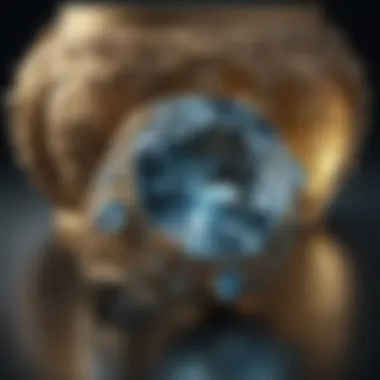
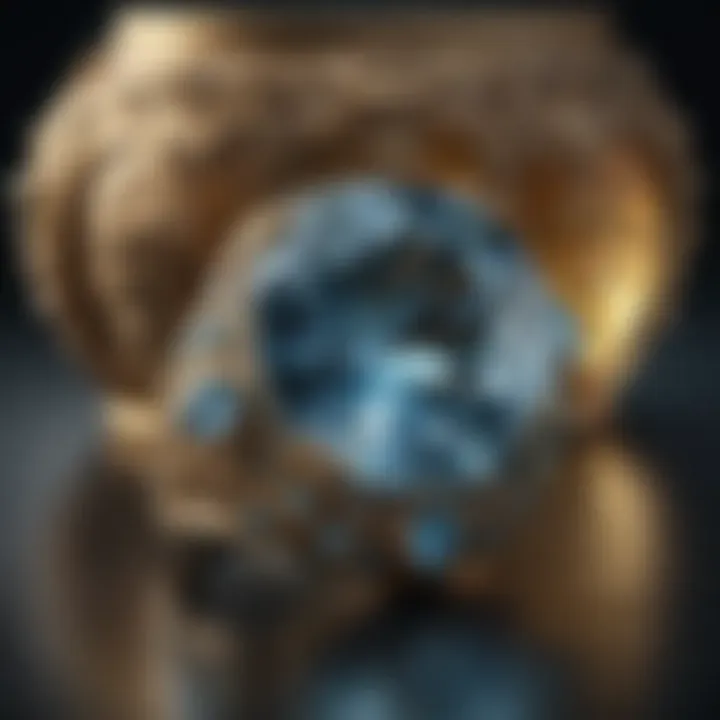
Aquamarine is renowned for its stunning shades of blue and green, mimicking the color of the ocean. This stone ranks between 7.5 to 8 on the Mohs scale of hardness, signifying its durability and suitability for everyday wear. Due to its appealing hue, Aquamarine is often used in various types of jewelry, including rings, necklaces, and earrings.
Beyond aesthetics, Aquamarine is believed to promote calmness and clarity. It is said to soothe the mind and enhance communication abilities. The stone is also associated with the throat chakra, facilitating self-expression and effective dialogue.
Historically, sailors valued Aquamarine as a protective talisman, believing it would ensure safe voyages and guard against perils at sea. This historical context enriches the stone's appeal, making it not just an accessory but a piece imbued with significance.
Alternative Birthstones for March
While Aquamarine is the principal birthstone for March, several alternative gemstones are also associated with this month. These include:
- Bloodstone: Known for its deep green color with red spots, Bloodstone is believed to be a healing stone, enhancing physical vitality.
- Jasper: This gemstone comes in various colors and is recognized for its grounding properties.
- Rock Crystal: A clear gemstone that represents purity and perfection. It is often used in spiritual practices for clarity.
Choosing an alternative birthstone can cater to personal preferences or deepen the meaningfulness of a gift. Each stone connected to March carries distinct properties and qualities, appealing to diverse tastes and intentions.
Understanding the March birthstone and its alternatives contributes significantly to appreciating these gems. Not only does it enhance the aesthetic experience, but it also provides a deeper connection to the qualities they represent.
The Properties of Aquamarine
Understanding the properties of aquamarine extends beyond its aesthetic value. This section focuses on the chemical composition, physical characteristics, and formation of this captivating gemstone. Grasping these properties not only enhances appreciation but also informs potential buyers and collectors about aquamarine's unique attributes.
Chemical Composition
Aquamarine is primarily composed of beryllium aluminum silicate, which is chemically represented as Be₃Al₂(SiO₃)₆. This structure contributes to both its striking appearance and remarkable durability. The presence of iron within the crystal lattice leads to its signature blue color. Since the intensity of color can vary significantly, the exact chemical makeup can influence market value.
Physical Characteristics
Color Variations
Aquamarine’s colors range from pale blue to deep blue and even greenish hues. These variations can significantly impact desirability among collectors and jewelers. The most sought-after shade is a bright, vibrant blue. Such color variations arise from the differing levels of iron and structural formation during crystallization. The freshness and clarity of the color can enhance the perceived beauty and therefore the value of the gemstone. However, darker shades can sometimes be less transparent, affecting their overall appeal.
Clarity and Transparency
Clarity refers to the presence of inclusions or blemishes within the gemstone. Aquamarine is known for its high clarity, often classified as 'eye-clean', meaning it can appear flawless to the naked eye. This quality enhances its desirability in the market, as clarity is a significant determining factor in a gemstone's value. Most aquamarine pieces exhibit a transparency that allows light to pass through, highlighting their natural brilliance. Individuals wishing to purchase aquamarine need to consider how clarity impacts both appearance and price.
Hardness
Aquamarine registers a hardness of 7.5 to 8 on the Mohs scale. This makes it relatively hard and suitable for daily wear, especially in rings and other jewelry pieces. The hardness is one of the key factors that contribute to its popularity among jewelry designers, as it can withstand regular use without scratching easily. However, care should still be taken to prevent hard impacts that might chip the stone.
The Formation of Aquamarine
Aquamarine forms predominantly in granite pegmatites, which are coarse-grained igneous rocks composed mainly of quartz, feldspar, and mica. The slow cooling of molten rock during geological processes allows crystals to grow large and well-formed. Uncertain environmental conditions during formation can result in variations in color and clarity. These factors can dictate both the aesthetic qualities of aquamarine and its economic value in the marketplace.
Historical Context of Aquamarine
Understanding the historical context of Aquamarine provides insight into its significance and the reasons it has remained a coveted gemstone over the centuries. Aquamarine, with its serene blue hues, has not only captured the admiration of gem enthusiasts but also has held substantial cultural and symbolic meanings. By exploring its usage and importance in ancient civilizations and its development through history, we can appreciate the depth and richness of this gemstone's narrative.
Aquamarine in Ancient Civilizations
In various ancient cultures, Aquamarine was more than a mere decorative stone. It was often regarded as a powerful talisman. The Ancient Romans believed that Aquamarine could protect sailors it was thought to favor them during their voyages. This belief facilitated the stone’s association with the sea and its calming properties.
Moreover, the Egyptians treasured Aquamarine as a symbol of eternal youth and happiness. The gem was commonly used in jewelry, and artifacts have been found within tombs, suggesting its importance in burial rites. It represented not only beauty but also a connection to the divine and the afterlife.
In addition, the Ancient Greeks connected Aquamarine to Poseidon, the god of the sea. They used it in various forms of adornment, reflecting their belief that the gemstone could harness the strength and tranquility of the ocean.
Aquamarine Throughout History
As we move through the timeline of gemological history, Aquamarine has consistently showcased its allure and versatility. In the Middle Ages, it was considered a stone of the aristocracy. Royal families and nobles wore Aquamarine to signify power and prestige. Its use in jewelry was often linked to ceremonial occasions, symbolizing purity and harmony.
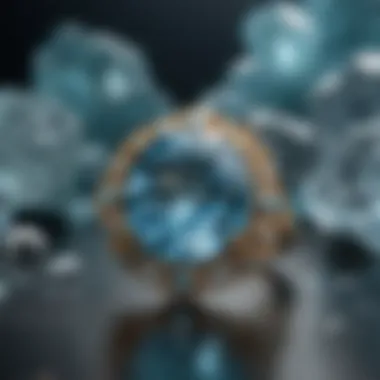

During the Renaissance, Aquamarine gained further popularity, celebrated for its exquisite clarity and shades ranging from pale blue to deep sea blue. Artists incorporated the stone into their works, emphasizing its aesthetic appeal and symbolic depth. The gem became a popular choice among craftsmen for intricate carving and decorative uses.
In modern times, Aquamarine continues to be prominent. It is favored in contemporary jewelry designs, remaining a symbol of elegance and sophistication. The historical significance of Aquamarine, rooted in its cultural heritage, influences its status in today’s market.
"Aquamarine has traveled through time, deeply embedded in the lore and traditions of many cultures, reflecting not just beauty but the human experience itself."
This exploration of Aquamarine's history allows us to appreciate not just its beauty and physical attributes, but also the rich tapestry of meanings and associations that have developed over millennia. By examining both ancient civilizations and historical trends, we gain a wider perspective on why Aquamarine remains a cherished gem today.
Cultural Significance of Aquamarine
Aquamarine, the birthstone for March, holds a distinguished place in various cultures throughout history. Its ethereal beauty and unique properties have led to its reverence far beyond mere ornamentation. This section explores the cultural significance of aquamarine, emphasizing its symbolism, meanings, and an exploration of its place in folklore.
Symbolism and Meaning
Aquamarine is often associated with myriad meanings across different cultures. Traditionally, it symbolizes tranquility, peace, and clarity. The soft blue hue is reminiscent of the ocean, often representing the soothing qualities of water. Many believe that aquamarine fosters sense of calm and harmony. Thus, it is sometimes referred to as the "crystal of courage," appealing to those needing confidence or reassurance in challenging situations.
The following list highlights key symbolic representations of aquamarine:
- Peace: Aquamarine promotes inner peace and emotional harmony.
- Courage: Thought to help individuals find their voice when confronting fears.
- Protection: Historically, sailors wore aquamarine to protect against sea dangers.
- Communication: An aid for clarity in relationships, aquamarine encourages open dialogue.
Aquamarine in Folklore
Folklore surrounding aquamarine is rich and varied. Ancient cultures often attributed magical properties to this gemstone. In Roman times, it was considered a treasure of the sea. Sailors viewed it as a lucky charm, believed to bring safe voyages and bountiful catches. The word "aquamarine" itself comes from Latin, meaning "water of the sea."
Many myths depict aquamarine as a stone of the mermaids. It was thought that these mythical beings used the stone to entice sailors. One popular narrative suggests that mermaids used aquamarine to secure happiness and express love.
"Historically, aquamarine has been treasured as a talisman for sailors, symbolizing hope for safe travel across unpredictable waters."
Moreover, cultures like the ancient Egyptians used aquamarine in jewelry, as both decoration and a protective talisman. They believed it would lead to prosperity and happiness. In modern times, aquamarine is still favored in wedding rings, symbolizing lasting love and fidelity.
Overall, the cultural significance of aquamarine is profound. From its rich symbolism and historical references to its ties with folklore, it continues to be revered as a stone of harmony and reassurance. Gemstone enthusiasts and collectors alike appreciate aquamarine for these reasons, making it a timeless favorite in jewelry design and spiritual practices.
The Metaphysical Properties of Aquamarine
Aquamarine, often associated with tranquility and serenity, carries a rich metaphysical narrative that extends beyond its visual appeal. This section explores these attributes, emphasizing how they resonate with those who value not just the aesthetics but also the emotional and spiritual dimensions of gemstones. Understanding metaphysical properties can be especially valuable for gemstone enthusiasts, collectors, and jewelry designers looking to infuse deeper meaning into their work.
Healing and Calming Effects
Aquamarine is prominently known for its healing properties. Many believe that this gemstone promotes emotional balance and calms the mind. Its soothing blue tones reflect a connection to water, which symbolizes clarity and peace. Users often report feelings of reduced stress and heightened tranquility when they are near this stone.
Benefits of Aquamarine in Healing:
- Stress Relief: Aquamarine is thought to dissipate anxiety, allowing users to feel more grounded.
- Emotional Clarity: Regular exposure to this stone may foster understanding and acceptance of one’s feelings.
- Enhanced Meditation: Many individuals use aquamarine during meditation to deepen their experience and achieve a peaceful state of mind.
Furthermore, aquamarine is said to assist with communication. It is believed to open up channels for honest dialogue, facilitating discussions that may be difficult otherwise. This makes it not only a beautiful gemstone but also a powerful tool for personal growth and healing.
Enhancing Communication and Clarity
Effective communication stands out as one of the most valued attributes associated with aquamarine. This gemstone is often dubbed the "stone of courage." It encourage clear expression of thoughts and feelings while also promoting the ability to listen attentively. Those who carry aquamarine are thought to experience improvements in their interpersonal interactions, exploring a deeper understanding of relationships.
Key Aspects of Aquamarine’s Role in Communication:
- Clarity of Thought: It helps in organizing thoughts before expressing them, potentially reducing misunderstandings.
- Social Ease: People often feel more relaxed in social situations when aquamarine is nearby, making engagements less daunting.
- Inspiring Confidence: Aquamarine is believed to boost self-confidence. Users may find it easier to articulate their emotions and needs clearly.
In summary, the metaphysical properties of aquamarine lend significant insight into its use beyond mere aesthetics. Whether in the context of healing, communication, or emotional balance, this gemstone holds a special place for many, making it not only a source of beauty but also a tool for personal development and connection.
"The aquamarine is more than a gem. It's a bridge to well-being and understanding."
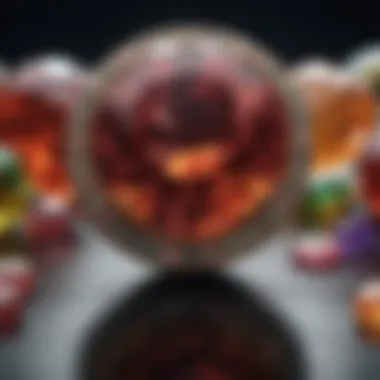

By exploring and understanding these properties, enthusiasts can cultivate a more meaningful and intentional connection with aquamarine.
Aquamarine in Jewelry
Aquamarine holds a revered position among gemstones, especially in the jewelry market. It is not only valued for its aesthetic qualities but also for its perceived properties and symbolism. The selection of aquamarine in jewelry enhances the wearer's elegance while also signifying calmness and tranquility. This section delves into the intricate world of aquamarine jewelry, highlighting popular designs and offering guidance on the care and maintenance of these beautiful pieces.
Popular Jewelry Designs
Aquamarine often appears in a variety of jewelry designs, appealing to a broad audience due to its vibrant hue and versatility. Here are some popular designs:
- Rings: Aquamarine rings are favored in both engagement and fashion rings. The soothing blue shades make them suitable for various occasions.
- Necklaces: Aquamarine pendants are often used to create stunning necklaces. These pieces can range from simple solitaire designs to intricate multi-stone arrangements.
- Earrings: Studs and drop earrings featuring aquamarine add a touch of sophistication, making them suitable for both casual and formal attire.
- Bracelets: Aquamarine can be incorporated into bracelets as a single stone or in a series of stones for added visual impact.
Each piece can be crafted in different metals, including gold, silver, or platinum, allowing for personal customization. The cooler tones of aquamarine complement warmer metal finishes gracefully. Individuals often choose aquamarine jewelry as a reflection of their personalities, embracing the qualities attributed to this gemstone.
Care and Maintenance of Aquamarine Jewelry
Proper care is essential for preserving the beauty and integrity of aquamarine jewelry. Here are some considerations for maintenance:
- Cleaning: Regular cleaning with a mild soap solution and a soft brush can help remove dirt and restore shine. Avoid harsh chemicals that may damage the stone or metal settings.
- Storage: When not worn, aquamarine jewelry should be stored separately to prevent scratching. A soft cloth pouch or a lined jewelry box is ideal for storage.
- Avoiding Impact: It is prudent to avoid wearing aquamarine jewelry during activities that may cause impact or expose it to harsh conditions.
By adhering to these maintenance tips, the vibrancy and appeal of aquamarine jewelry can remain intact for generations. This beautiful gemstone not only serves as a adornment but can also become a cherished heirloom that carries emotional significance.
Aquamarine symbolizes serenity and is often associated with calming energies, making it a thoughtful choice for personal gifts or special occasions.
Ethical Sourcing of Aquamarine
The conversation around gemstones has evolved, especially concerning their sourcing. Ethical sourcing of Aquamarine is crucial in ensuring that the beauty of this gem does not come at a human or environmental cost. It highlights accountability and transparency in mining practices.
Challenges in the Gemstone Industry
The gemstone industry faces numerous challenges, primarily due to lack of regulation. Many aquamarine mines operate in countries where labor laws and environmental protections are weak or nonexistent. This often leads to exploitative practices, such as low wages, unsafe working conditions, and child labor.
Additionally, environmental degradation is a significant concern. Gemstone mining can lead to deforestation, soil erosion, and damage to local water resources. These effects not only impact the ecosystem but also the communities that rely on these natural resources for their livelihoods.
Efforts to overcome these challenges require a concerted effort. Organizations and consumers need to work towards changing industry standards. We should support initiatives that prioritize fair labor practices and environmental sustainability.
Sourcing Ethical Gemstones
Sourcing ethical gemstones is a viable approach that can mitigate the negative impacts of gemstone mining. This involves purchasing aquamarine from suppliers who are committed to ethical practices. By ensuring that gemstones are sourced from operations that respect both human rights and the environment, the industry can begin to shift toward more responsible practices.
Consumers have a role in this process. By choosing ethical sourcing options, buyers can signal their support for responsible mining. Some key points to consider when sourcing aquamarine ethically include:
- Certification: Look for stones that have been certified by third-party organizations that verify ethical practices in mining.
- Traceability: Ensure that the stone's origin is transparent and traceable. This helps in understanding where and how it was mined.
- Local Socioeconomic Impact: Choose gemstones that contribute positively to local communities, promoting sustainable development and fair wages for workers.
Ethical sourcing not only provides assurance to consumers but also fosters respect for the environment. As discussions about ethical practices gain momentum, it is essential for gemstone enthusiasts to prioritize and push for higher standards in aquamarine sourcing.
Epilogue
The conclusion of this article serves to underline the vital role aquamarine plays as the birthstone for March 29. It encapsulates not only the beauty of this gem but also its historical, cultural, and metaphysical dimensions. Aquamarine is not merely a stunning stone; it embodies significant meanings and serves various functions throughout human history.
The Enduring Allure of Aquamarine
Aquamarine’s appeal persists across centuries. Its serene blue hue often evokes a sense of tranquility and calmness. Many people find it to be more than just an ornament; it acts as a symbol of peace and clarity. For collectors and jewelry enthusiasts, aquamarine is a desirable choice not only for its aesthetics but also for its perceived benefits in promoting emotional balance.
The unique characteristics of aquamarine, such as its crystal structure and distinctive color variations, further enhance its allure. Water-like clarity adds to its aesthetic charm, making it highly sought after in various jewelry designs ranging from elegant rings to intricate pendants. The gemstone's versatility allows it to adapt effortlessly to different styles, appealing to a wide audience.
"Aquamarine is often called the 'stone of the sea,' reflecting its connection to water and its calming properties."
Moreover, aquamarine’s historical significance cannot be overlooked. In ancient times, sailors believed it offered protection in tumultuous waters, symbolizing safety during voyages. Understanding such elements contributes to deeper appreciation of this gem, reinforcing why aquamarine remains a favored choice for March birthdays.
Final Thoughts on Birthstones
Birthstones, including aquamarine, represent more than mere decorative elements; they are linked to personal identity or fate. For those born in March, aquamarine holds special meaning, being a gem that resonates with emotional wellness. Furthermore, the ethical considerations involved in gemstone sourcing are increasingly pertinent today. Buyers show concern about how and where their gems are sourced, making it vital to prioritize ethically sourced aquamarine.



